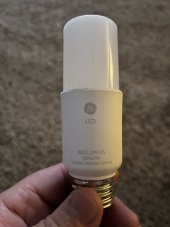SignatureSolarJames
Try Solar, the Grid will always take you back
Guys, I wanted to supply details on the bulbs and methodology for this video here
we used the keystone KT-LED13PAR38-F-840 to avoid flicker, the GE relax LED8DAGSW90 was the flickering one
the strip lights were Lowes utilitech
the two bright lights in the middle were 40W high power bulbs from amazon
I doubt we can find bulbs $10 or more that have these issues with any inverter



